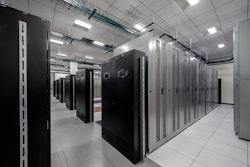Three quarters of decision-makers at U.S. companies have invested in energy efficiency programs in the past 12 months, and more than half (56 percent) project their investment in energy efficiency next year will be more than last year, according to survey results released by Schneider Electric today. This represents a 12 percent increase in energy efficiency investments and a 13 percent increase in projected investments in the past 12 months, according to a similar survey of energy leaders conducted by Schneider Electric in June 2013.
“Increased investment suggests business leaders are seeing a return,” said Laurent Vernerey, President and CEO, North America Operations, Schneider Electric. “In fact, more than half (51 percent) of respondents said they realize at least a 25 percent ROI on efficiency initiatives. This type of return will drive more investment in efficiency applied across the enterprise – beyond energy consumption - as organizations find that they must become operationally efficient to remain competitive and profitable in today’s environment.”
One potential driver of the increased investment is simply that a path to efficiency is now easier to measure due to a major trend emerging across the enterprise: the convergence of information technology (IT) and operational technology (OT). When asked about the biggest trends impacting business today, more than half (56 percent) of respondents cited this trend, with 61 percent saying that energy efficiency was its biggest benefit. Byproducts of increased efficiency, including cost reductions (48 percent), and optimized business processes (43 percent), were also reported as benefits.
However, respondents also acknowledged that this trend comes with its own set of challenges, including more complex technology management (55 percent), security (54 percent) and conflict between IT and operations staff (47 percent).
“The need for efficiency is increasing, as is the complexity on what companies can and should do,” continued Vernerey.”To stay competitive, more and more companies today need expertise on issues such as how to manage volatile commodity costs, balance sustainability pressures from governments and modernize systems and infrastructure in a smart way.”
In fact, the survey confirmed modernization as another issue at the top of decision-makers’ agenda. Infrastructure upgrades followed the convergence of IT and OT with 22 percent of respondents citing it as impacting their business. 51 percent of respondents believe infrastructure modernization is an important business priority and 48 percent believe upgrading public infrastructure will make their city more attractive for business than others. Respondents said electrical systems (56 percent), traffic/transportation systems (53 percent), and telecommunications (48 percent) are the public infrastructure modernization projects that are most impactful on their business.
Efficiency initiatives (12 percent) and sustainability demands (9 percent) rounded out the list of the biggest trends. Energy efficiency initiatives were identified by respondents as the top way (59 percent) companies do more with less in today’s business environment and almost half of respondents said that sustainability initiatives improve profit margins (47 percent) and keep them competitive (49 percent).
“Progressive organizations are recognizing that efficiency is an emerging basis for competition,” concluded Vernerey. “Increased investment will result in greater efficiency gains, and that’s good for businesses, the economy and the environment.”
To learn more about Schneider Electric’s thought leadership in energy management and energy efficiency, visit https://www.se.com/us/en/.






















